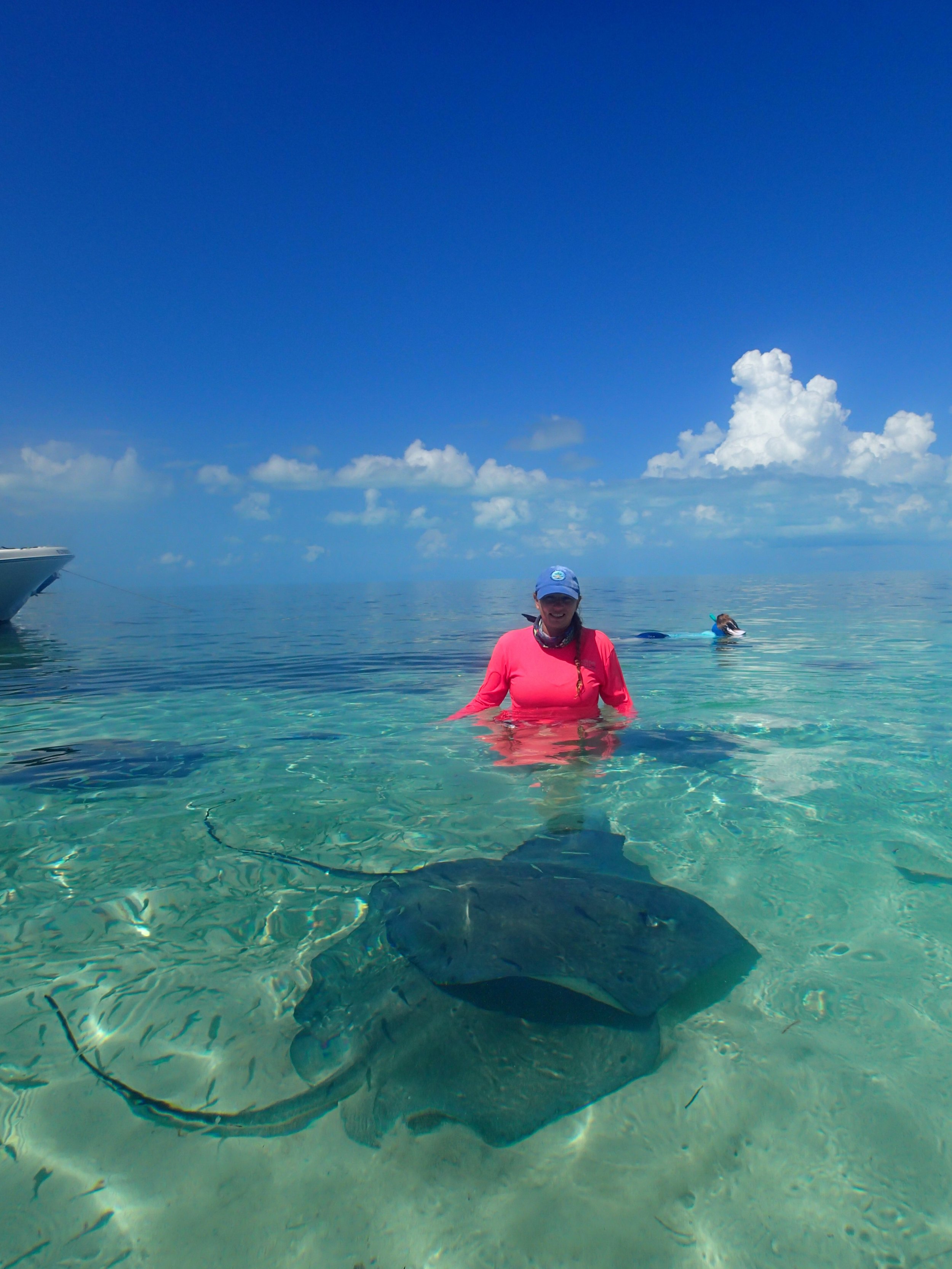Shark Knowledge can help Conquer Fear
Lemon shark in mangrove nursery on Bimini Island, Bahamas
by Mia McCormick
Sharks can be scary, especially if you don’t understand their behavior…and if you believe the “click bait” headlines and social videos on dangerous encounters. We know that the best way to overcome fear about sharks is to learn everything we can about them.
Last month our Director of Education Katie Mastenbrook was chosen as a scholarship recipient of a 7-day field course at the Bimini Biological Field Station Foundation Shark Lab. The goal of the scholarship was to provide an opportunity to educators who can reach students that otherwise have no connection to the ocean.
Q: Katie why did you feel like this opportunity was right for Tampa Bay Watch, aren’t we pretty close to the Gulf?
Katie: Yes! But the ocean environment as a whole can be misunderstood by our local communities, because many just haven’t experienced it the way we have. In our outreach efforts and on-site field trips with our underserved communities like Title I and academically at risk schools, I’ve met students that live less than a mile from the Gulf but have never experienced it first-hand. For many of those students the word shark is the only thing they associate with getting in the water and it can create feelings of fear.
Q: Why do you think people inherently associate the word shark with fear?
Katie: The media typically represent sharks in a negative light, you only hear about them when something happens during a shark/human encounter. Then lots of “click bait” headlines pop up that use fear to drive you to the story. Also, people typically think of sharks as only aggressive apex predators. But at the Shark Lab in Bimini I learned that there are over 500 species of sharks that range from the size of your hand, all the way up to a Whale shark, which can be 39 feet long. Sharks are actually filling all kinds of roles in their environment, each one important in some way.
Lemon sharks in Bimini
Q: What specifically do you hope to share from Bimini with students from the Tampa Bay area?
Katie: Knowledge can conquer fear. I had the opportunity to swim and interact with several species of sharks during the field course including, nurse sharks, juvenile lemon sharks, black nose sharks, and Caribbean reef sharks. That first-hand experience is a powerful tool when I’m talking to students. For example, our summer campers encountered a small bonnethead shark in the water and at first they were scared, but my experience in Bimini helped me talk them through the shark’s behavior and most were able to conquer their fear and observe it peacefully in its natural environment.
Nurse shark in Bimini
Q: What do you think is the biggest threat to the shark populations and what can people do to help?
Katie: Habitat loss is a big one. While I was in Bimini, we visited a mangrove site that has served as a nursery for lemon sharks for generations. It was full of juvenile sharks. But that site is scheduled to be filled in and turned into a golf course. Becoming bycatch from commercial fisheries is another threat for sharks. And overfishing can take away their source of food.
One good way to help protect sharks is to get involved in any capacity to help the ocean environment. It could be a coastal cleanup or building a living shoreline with us to help promote healthy nursery areas, or just learning factual information in one of our education classes or eco-tours and spreading it! A lot of what people see online is misleading and the more of us we have out there spreading true information about these vitally important creatures, the better.
Katie Mastenbrook, Director of Education Tampa Bay Watch with a Southern stingray in Bimini



